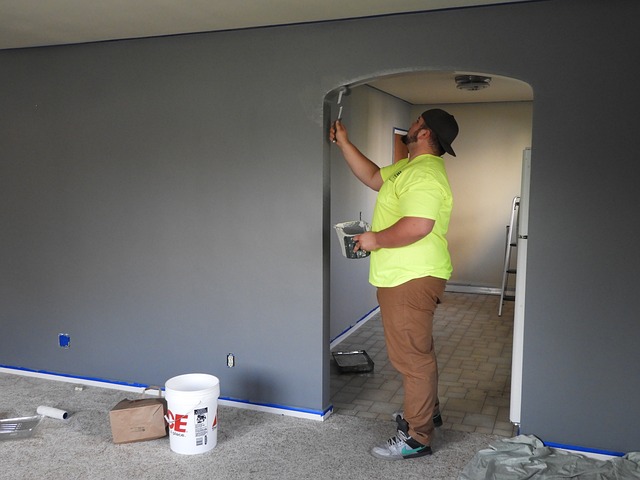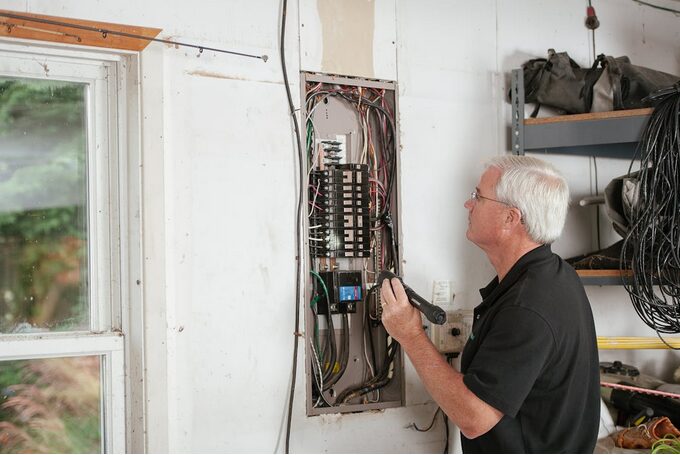Eco-friendly construction practices have gained significant traction in recent years, with a growing emphasis on sustainability and reducing environmental impact. While much of the focus tends to be on above-ground structures, the potential for green building also extends below ground. Often overlooked in sustainable construction discussions, basements present unique opportunities for energy efficiency, resource conservation, and environmental stewardship. Check out energiesparhaus.at/hausbau/keller-nachhaltig-bauen.htm for more details on building basements sustainably. Building an eco-friendly basement involves carefully considering materials, insulation, water management, and energy systems. This article explores the principles and practices of eco-friendly basement construction, highlighting how building below ground with a green mindset can contribute to a more sustainable home.
Choosing Sustainable Building Materials
The foundation of any eco-friendly basement construction starts with the choice of sustainable building materials. Traditional basements often use materials like concrete, which has a high environmental impact due to the energy-intensive processes involved in its production. However, there are more sustainable alternatives available. Recycled concrete or fly ash concrete, for example, offers similar strength and durability with a reduced carbon footprint. These materials are produced using industrial byproducts, reducing waste and lowering the environmental impact of the construction process. By carefully selecting sustainable materials, homeowners can ensure that their basement construction aligns with their broader ecological goals.
Enhancing Insulation and Energy Efficiency
Basements are naturally more insulated than above-ground spaces due to their location below the earth’s surface. However, additional insulation is crucial for maximizing energy efficiency and maintaining a comfortable indoor environment. High-quality, eco-friendly insulation materials such as cellulose, wool, or recycled cotton can further insulate basement walls and floors. These materials are effective at preventing heat loss and have lower environmental impacts compared to traditional insulation options like fiberglass. Proper insulation helps reduce the energy needed to heat or cool the basement, leading to lower utility bills and a smaller carbon footprint.

Implementing Effective Water Management
Water management is critical to eco-friendly basement construction, as basements are particularly susceptible to moisture and water damage. Proper drainage systems, such as French drains or sump pumps, are essential to prevent water accumulation and protect the structural integrity of the basement. In an eco-friendly construction approach, these systems can be designed to minimize water waste and promote groundwater recharge. For instance, instead of directing water away from the property, a well-designed drainage system can channel it into a rain garden or permeable landscape area, where it can naturally infiltrate the soil. Homeowners can protect their investments and contribute to water conservation efforts by prioritizing effective water management in basement construction.
Incorporating Renewable Energy Systems
Integrating renewable energy systems into basement construction is another way to promote sustainability and reduce the overall environmental impact of the home. Basements offer unique opportunities for installing geothermal heating and cooling systems, which use the earth’s stable underground temperatures to regulate indoor climate efficiently. These systems can be particularly effective in reducing energy consumption for heating and cooling, as they require less energy than conventional HVAC systems.
Designing for Multi-Functional Use
An eco-friendly basement is not just about construction materials and energy efficiency; it also involves thoughtful design that maximizes the use of space and reduces the need for additional construction. Designing the basement as a multi-functional space can eliminate the need for additional square footage elsewhere in the home, thereby conserving resources. By accommodating multiple functions, homeowners can avoid the environmental impact of expanding their homes and reduce overall resource consumption.
Conclusion
Building an eco-friendly basement involves more than just digging a hole in the ground; it requires a thoughtful approach, prioritizing sustainability at every step. By embracing these principles, homeowners can create a below-ground space that is functional and comfortable and contributes to the home’s overall sustainability.






 Home renovation companies are there to provide you with precisely what you need, but they cannot allow you to understand their character. Find out what you want your home to look like before you start renovating it because you never know exactly how it will turn out, in all likelihood, if your expectations are not explicit. Occasionally, you may be able to figure out how to spend a little less on some renovations if you consider offsetting the design with this. For example, an old sofa may stand out in the distance from the moment you put it in some fancy cushions.
Home renovation companies are there to provide you with precisely what you need, but they cannot allow you to understand their character. Find out what you want your home to look like before you start renovating it because you never know exactly how it will turn out, in all likelihood, if your expectations are not explicit. Occasionally, you may be able to figure out how to spend a little less on some renovations if you consider offsetting the design with this. For example, an old sofa may stand out in the distance from the moment you put it in some fancy cushions.
 One of the best ways to keep your air conditioner running OK is to clean the filters regularly. Dust and dirt can build up on the filters over time, affecting the unit’s performance. Be sure to clean or replace the filters as needed to ensure that your AC is functioning at its best. Moreover, if you have pets, be sure to clean the filters more often, as they will likely contain more pet hair than other filters. You can also buy disposable air conditioner filters, making cleaning the filter much more effortless.
One of the best ways to keep your air conditioner running OK is to clean the filters regularly. Dust and dirt can build up on the filters over time, affecting the unit’s performance. Be sure to clean or replace the filters as needed to ensure that your AC is functioning at its best. Moreover, if you have pets, be sure to clean the filters more often, as they will likely contain more pet hair than other filters. You can also buy disposable air conditioner filters, making cleaning the filter much more effortless. Finally, it’s a good idea to unplug electronics when they are not in use. Electronics that remain plugged in will draw power and slowly drain the batteries inside. Moreover, they can also drain more electricity and potentially increase your monthly bills. Be sure to turn off any electronic devices before you leave home or go to bed at night, so your appliances don’t waste energy while you’re gone. There you have it – some of the best tips for keeping your home appliances running smoothly.
Finally, it’s a good idea to unplug electronics when they are not in use. Electronics that remain plugged in will draw power and slowly drain the batteries inside. Moreover, they can also drain more electricity and potentially increase your monthly bills. Be sure to turn off any electronic devices before you leave home or go to bed at night, so your appliances don’t waste energy while you’re gone. There you have it – some of the best tips for keeping your home appliances running smoothly.